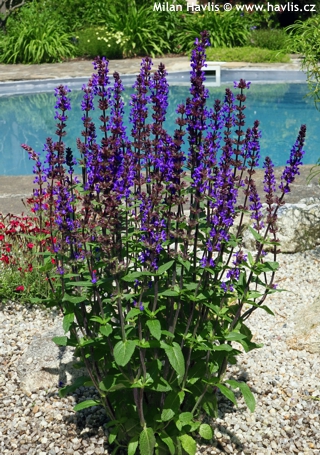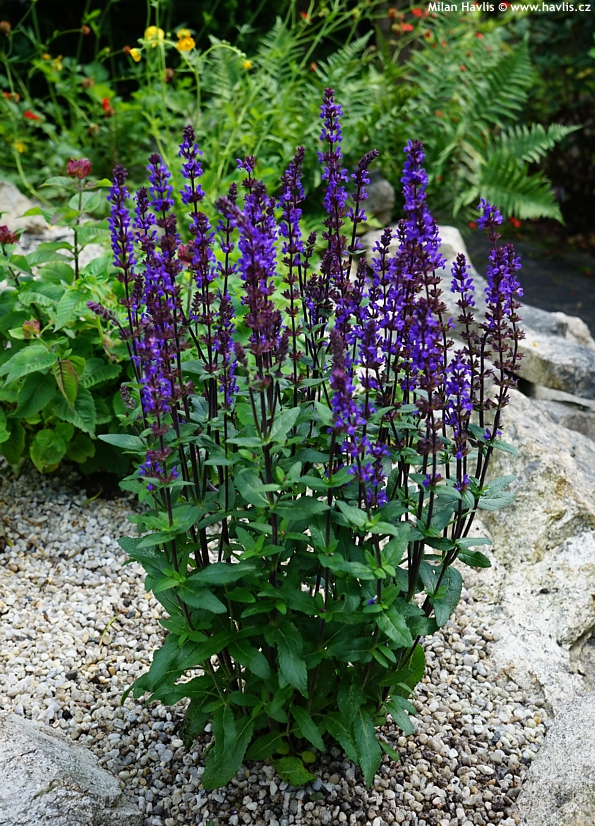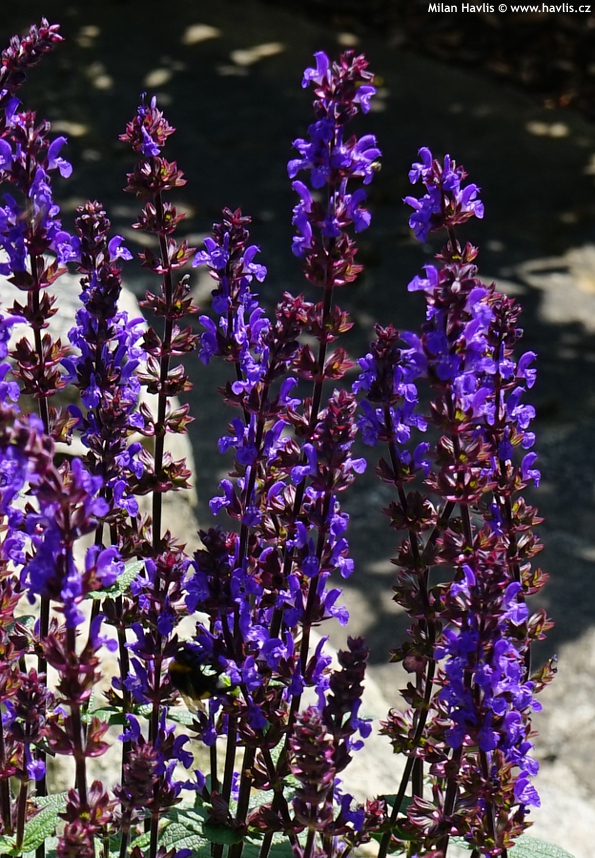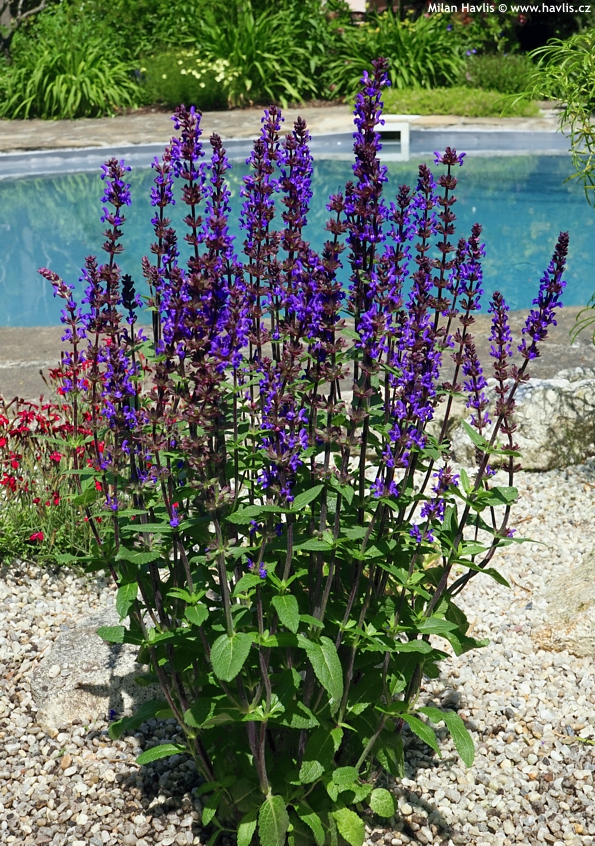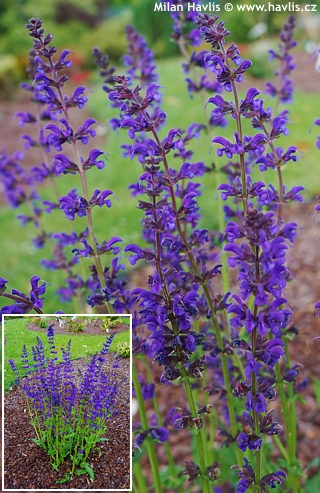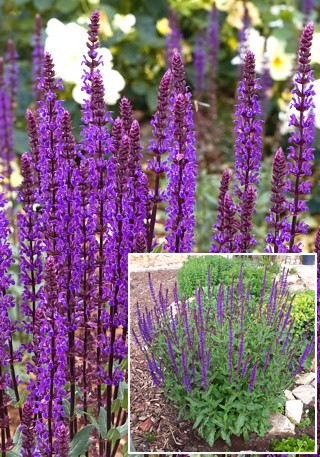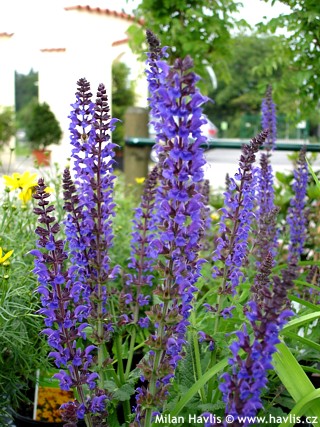Salvia nemorosa 'CARAMIA' woodland sage
Salvia
Salvia is a large genus, containing about 900 species. In our climate mostly common (evergreen) sage is grown for culinary uses. Also, very popular are those of subtropical origin that are used here as annuals with long flowering season, especially in public areas. We concentrate on herbaceous perennials which are not widely cultivated and we believe that there are species, hybrids, and varieties worth the job.
Perennial sage lovers surely know one of the most popular and sought-after variety with deep purple violet stems called Caradonna. In 2018 its improvement was introduced called Caramia. It boasts the same colours, twice or three times more flowers, and a more compact, shorter habit. Caramia makes compact clumps with erect stems 40-50 cm tall, very dark purple blue, almost black, bearing deep violet-blue flowers in spike-like inflorescences. The main flowering begins from late May and lasts about one and a half months, meanwhile new flowering stems are formed for weaker flowering in midsummer.
However, if you cut the whole plant back to the ground after the first flowering phase and feed it a little, it will re-grow into a nice and bushy clump with plenty of long, flowering stems offering the same show in late summer. Otherwise it needs no care whatsoever. Leaves are mid green, narrowly ovate, wrinkled, and softly hairy.
Sage will grow in almost any well-drained soil. For best results grow it in light, humus-rich, well-drained soil in full sun or light shade. It needs no fertilizing, only in very poor or compacted soils it will benefit from occasional feeding with a balanced fertilizer. In early spring remove all above-ground parts except for rosette of new or over-wintered, healthy leaves lying flat on the ground. It is perfectly hardy to about -34°C (USDA zone 4) and will grow in outdoor pots and throws, too.
Last update 30-06-2020

































